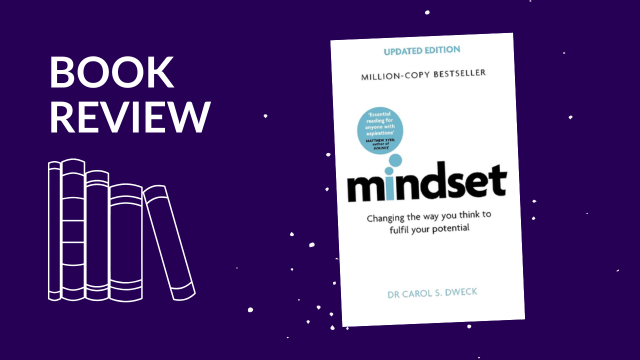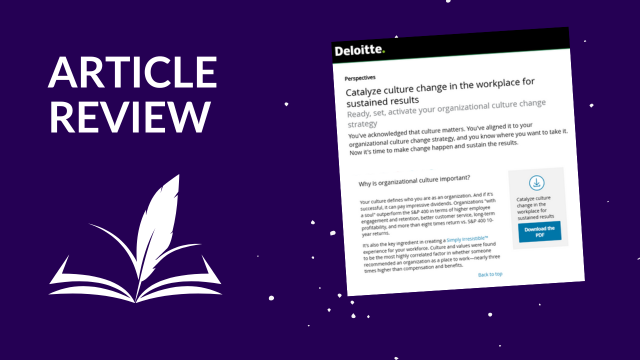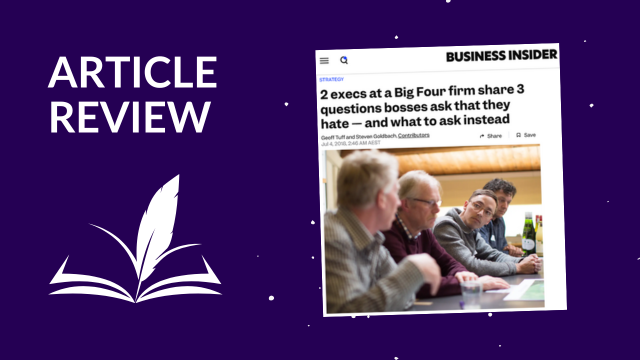Isn’t resistance to change like gravity? Just a widely accepted force that change management professionals address every day? That’s what we thought until we discovered a 1948 research study on overcoming resistance to change that sparked our interest in reviewing how techniques for managing resistance have evolved and which ones may still be important to use in our work today.
Resistance to change by employees, management, and leadership has been a major theme within the change management discipline for many years—almost 70 to be more specific. To better understand how its ideas and practices evolved, we chose seven articles—one for each decade. The articles span the years from 1948 to 2014; they include research at universities and research in business as well as articles by consultants whose names may already be familiar to change management professionals.
In this article, we’ll look at articles written from 1948 to 1989. In Part 2, we’ll continue our review through 2015. Let’s see what we can learn from the evolution of change resistance.
- Coch, Lester, and French, John R.P. (1948) Overcoming Resistance to Change, Human Relations, November 1948, Vol. 1, No. 4, pp. 512 – 532.
- Chesler, Mark and Flanders, Mary. (1967) Resistance to Research and Research Utilization: The Death and Life of a Feedback Attempt. Center for Research on Utilization of Scientific Knowledge, Journal of Applied Behavioral Science, Vol.3, No. 4, pp. 469-487.
- Keen, Peter G.W. (1980) Information Systems and Organizational Change. Center for Information Systems Research, Alfred P. Sloan School of Management, No.55, Sloan Work Paper No. 1118-80.
- Baker, Sharon L. (1989) Managing Resistance to Change, Library Trends, Vol. 38, No. 1, pp. 53 – 61.
What Does This Mean for Practitioners?
Making changes in the workplace and studying the response from employees has been going on since Mayo and Roethlisberger conducted their research at Western Electric’s Hawthorne plant in the late 1920s and the world adopted the notion of the “Hawthorne Effect.” What have we learned from studying the response to change? How have our notions changed?
Reading through these articles reveals that the language has evolved, the areas of study have become multi-dimensional, there are some deepened understandings of how to recognize and manage resistance, but the basic notion of resistance remains as an expected part of the change process. Let’s take a closer look at each of these articles.
Overcoming Resistance to Change (Coch and French, 1948)
Perhaps the earliest published study using the word resistance was the Coch and French 1948 study, which set out to study: 1) Why people resist change so strongly?; and, 2) How can this resistance be overcome? Although the situation studied was much simpler than the changes facing organizations today, two mitigating practices stand out as relevant to reducing resistance:
- Clearly articulating and even demonstrating the business case for change using context and examples that each stakeholder group can understand.
- Planning for participation (what we now term employee engagement) in decision-making around how to implement the changed business processes.
Coch and French clearly made the case for recognizing the social collateral of groups and having groups participate in designing the solution that affects them.
Resistance to Research and Research Utilization (Chesler and Flanders, 1967)
This study, which took place within a school district, had the goal to discover how to increase utilization of research in key educational areas, specifically related to teachers sharing best practices. The study presents a great example of how force-field analysis can be used to evaluate an unsuccessful change activity in order to modify behaviors and realize a successful redo.
The article presents four “rules of the game” (terminology pre-dating formal change management processes) that have been restated for increased relevance in today’s organizational change language:
- Prepare the stakeholder groups and “contract” with them around clear goals and role expectations (theirs and yours).
- Ensure that trust has been and will continue to be a primary attribute of the interactions between change agents and groups.
- Continually demonstrate your value as a change agent by working within the context of each stakeholder and providing information in their language.
- Ensure that stakeholders are included in any dialogue in order to hear their feedback, give them a role in planning and providing direction, and understand the unique set of knowledge and skills they need to be successful during and after the change.
Information Systems and Organizational Change (Keen, 1980)
This paper is a must-read for learning about the political environment surrounding change and other more elusive components of change. It talks about implementing information systems at a time when technology was being introduced into the work environment, thus pioneering the notion that information means power and influence. The author, Peter Keen, talks about social inertia (resistance) and its effect on “dampening” technology innovations. It is the first instance found where the concept of implementation is presented.
Keen addresses resistance as “counter-implementation.” Of specific value to practitioners is his presentation of the types of resistance in terms of phrases they might be hearing from stakeholders individually or as a group. He talks a specific contract “between user and implementer built on mutual credibility and commitment” that relates directly to individualizing operational objectives.
Keen also introduces the term “fixer” which he defines as an individual with enough power, influence, resources “prestige, visibility and legitimacy to facilitate, deter, bargain and negotiate effectively.” He may have had in mind an effective sponsor of change or he may have been describing a very competent, very experienced change management professional. Whatever his intent, it represents an aspirational description of competencies helpful to change professionals.
Keen also emphasizes the need to recognize organizations as pluralistic groups—a number of individuals or smaller group who do not have a common purpose (despite the common belief that all individuals in an organization do have a common purpose)—a fact that merits inclusion in any change strategy and implementation plan that will address “social inertia” or resistance.
Managing Resistance to Change (Baker, 1989)
The focus of this article is the role of management in mitigating resistance. Baker lists types of resistance in terms of commonly-seen work behaviors—task avoidance, hostility, resignation, and underproduction. Baker moves closer toward the concept that resistance is an overwhelmingly negative factor that needs to be ferreted out and squelched. She places responsibility squarely on the shoulders of management to work both short- and long-term to mitigate resistance.
What she reminds us, as change practitioners, is that knowledge can reduce fear. To be truly effective that knowledge should come in the form of very specific answers to employees’ specific questions. Knowing that their questions will be answered will help give them a greater sense of control over themselves and their environment.
Baker reminds us again to ensure that not only the business case must be made clear, but that the WIIFM in the business case is clear—providing employees with time to reflect on how the proposed impacts will affect them before the next wave of communication.
Perhaps Baker’s most important contribution is to propose that it is management’s responsibility to prepare the organization for changes yet ahead by creating an environment where change can flourish—letting each and every employee know, on a regular basis, that you know them and know the value of the contribution they are making.
Baker’s longer-term behavioral proposal precedes several of the theories that we will see in the second part of this series, “70 Years of Resistance, Part II.”
It is interesting to note that each of these four articles, although written from 25 to 67 years ago, have valuable insights for today’s practitioners. What older articles have you come across that have shed light on current practices related to resistance?







